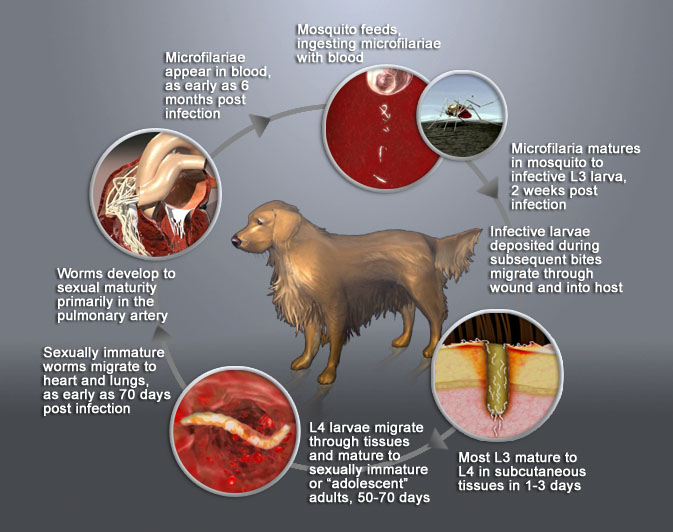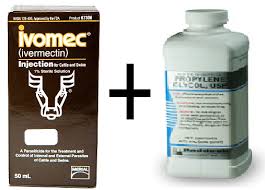Many disorders can seriously impair the function of your dogs cardiovascular and pulmonary systems-the organs and the blood supply associated with your animals heart and lungs. Among the most severe of these diseases is heartworm disease, a condition caused by infection of a parasitic worm.
This insidious disease is known to be most prevalent in areas with hot and muggy climates that accommodate the proliferation of mosquitoes, which transmits the disease from animal to animal. However, heartworm disease is now a threat to both dogs and cats in all areas of the US, especially during the warmer months of the year.
Although the name of this disease suggests that the disorder mainly effects the heart, infection can cause health problems that involve the lungs, liver and kidneys as well as the heart. Fortunately, heartworm infection is easily avoidable and has become rare among dogs that receive veterinary attention and preventative medication from their owners.
Vulnerable Hosts
Canine heartworm infection occurs when an infected mosquito bites a dog, and in doing so, deposits larvae that it has picked up from an infected animal. Over time, these larvae thrive and mature in the bitten animals body, initially in the tissues directly beneath the skin, then in the muscle tissues, and eventually in the right ventricle of the animals heart, in it’s lungs and in the arteries associated with those vital organs.
Mature parasites eventually reside for the most part not in the heart, but in the pulmonary arteries, which carry blood from the heart to the lungs. Even when the worms are immature, they are able to mate, with females releasing their offspring, called microfilariae, into the host animals bloodstream, where they continue to develop. An animal may begin to show the clinical signs of illness between 60 and 100 days after the initial infection, even though the parasite has not yet reached maturity.
Within six or seven months, these white, threadlike worms grow large enough to be visible, and they usually reach their maturity within a year or so. When fully grown, males are typically 4 to 6 inches in length, while females may be as much as a foot long. It is not uncommon for 30 or more worms to be found in the system of an infected animal, however a dog can harbor hundreds of these worms. And, if they are allowed to thrive within their host, heartworms can live 5 to 7 years or longer.
The various disorders brought about by heartworm infection are largely attributable to their impressive size. In an advanced infection, the worms damage the walls of the pulmonary arteries and place excessive strain on the heart as it attempts to pump blood through those packed vessels.
In rare cases, a heartworm infection may disappear spontaneously, possibly because the animal has developed an immune response that is sufficiently strong to kill the parasite. In most cases however, the parasite will progress inexorably, with non specific clinical signs that may mimic the indications of many other diseases.

Clinical Signs and Best Treatment
The most common clinical signs of heartworm infection include rapid and difficult breathing, coughing and gagging, loss of appetite, lethargy and weight loss. Often, the first indication of infection is a dogs general sluggishness and reluctance to exercise. Although these signs may have a sudden onset, they usually appear gradually. A dog that does not exercise strenuously and is harboring a low number of adult worms may never show clinical signs of infection. In some cases a dog may survive a heartworm infection for an extended period of time before succumbing to the disorder.
The evaluation of the dog will typically include a complete blood count and blood chemistry profile, a test to determine whether the patients blood contain antibodies to the parasite and test to see whether heartworm larvae proteins are present in the blood. In addition, ultrasound and X ray imaging procedures may reveal the presence of heartworms in the cardiac or pulmonary vessels.
Once diagnosed, canine heartworm can usually be treated successfully either with adultcides, powerful drugs that kill the worms, or microfilaricides, which kill their immature offspring. The most often used adultcide is melarsomine, which is injected deep into the muscles in a series of treatments, the timing and frequency of which depends the severity of the infection. To kill the immature worms, vets will most commonly use a preventative drug , such as Inceptor, which is administered one month after the adultcide treatment has been completed.
Following the successful use of an adultcide, it is still possible for blood flow through the pulmonary arteries to be obstructed due to the collection of dead worms within those vessels. Treatment for this complication will require the use of anti-inflammatory corticosteroid drugs and a strict reduction in the animals exercise. Dog owners who also have a cat should be aware that the drugs used to kill canine heartworms are likely to kill a cat that ingests them.

 Preventative Measures
Preventative Measures
Although treatment of heartworm disease in dogs is usually successful, prevention is much safer as well as being more economical. A wide variety of heartworm preventatives are available, including topical medications that are applied monthly and chewable tablets that are given periodically.
Dog Watch-Tom Ewing






